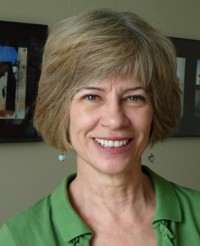Nature’s Second Chance, by Steven I. Apfelbaum
Back in the '70s when Steven Apfelbaum told his mom he was
studying for a degree in ecology, his mother didn't know what to think. Unable
to accept or perhaps even understand this new specialty, she told friends that
"Little Stevie was going to be a veterinarian." She wasn't the only one
wondering. Ecology was a vague, warm-n-fuzzy abstract that smacked of good but
impractical intentions with some real science-botany, geology and
chemistry-bundled into a degree that would be difficult to market.
But Apfelbaum had always loved being outside, from college
weekends spent at Devil's Lake State Park in Wisconsin to canoeing Minnesota's Boundary
Waters. By the time this book begins, he has graduated from the University of
Illinois and is founder of his own company, Applied Ecological Services, and on
his way to becoming an international leader in ecological system restoration,
conservation development and the restoration of hydrology.
Yet Nature's Second Chance is not the story of that success, although Apfelbaum the ecologist
shares some of what he's learned throughout the book, making it an educational
as well as an entertaining read. This book is about how all of that passion for
the out of doors plus his skill and vision became personal. Apfelbaum wanted
not just to work on others' land and projects but to live and work on his own
land. In 1982, he stumbled upon 2.7 acres of farm and farm buildings in
southwestern Wisconsin and decided to purchase the land.
When the opportunity came to buy more, he couldn't refuse. Soon he was studying
historical documents and maps to learn how the land was shaped and used, noting
the different land types—woodland, wetland, prairie bluff—and developing a
vision for how it might be healed and returned to vibrancy.
Apfelbaum tells a great story, and he doesn't leave out the
evidence of his own eccentricities—he's so focused on being "back to the land,"
for example, that he's reluctant to renovate the house, even when rats
regularly awaken the family or buckets are needed when it rains. He tries, but
he simply cannot understand his partner Susan's desire to plant a nonnative
species in a summer garden—petunias. The flipside of this man, however, is the
tenacity and patience to collect seeds, year after year, in paper bags, when he
and Susan find rare prairie plants. Or the willingness to tell neighbors about
what they are doing, and to welcome them to walk through the lush, brilliantly
colored fields of restored prairie flowers.
Apfelbaum knows that his accomplishments are all fragile
ones; he's seen rare prairies or tree groves disappear overnight and huge homes
go up almost as quickly. He presses questions that I hadn't asked: what comes
after the family farms when they're no longer viable? How do we begin to
retrain ourselves to think not of the use and quality of "our land" but of a continuous
stretch of ecosystem that is only healthy if all the parts make a whole?
One place to start, one that most of us can understand, is
the water source. Before building, buying, farming or developing, we need to
know where our water comes from, how we keep it safe and how we adjust our
plans to let rain and earth replenish that source.
The other place to start is with the land where one lives,
making a physical effort or a figurative, political effort, to do what Aldo
Leopold—and Apfelbaum—have done. "On this sand farm in Wisconsin, we try to
rebuild, with shovel and axe, what we are losing elsewhere."







